Ken Abbis
2022 COE Winner
That's an axiomYa know just my opinion but I really should be there.
That's an axiomYa know just my opinion but I really should be there.
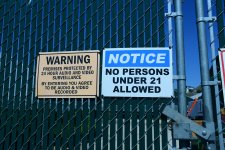
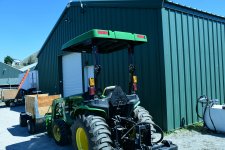
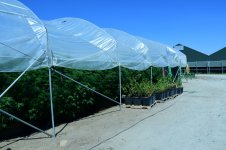
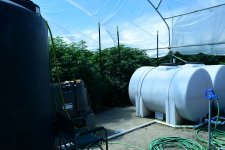


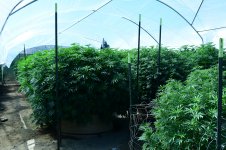
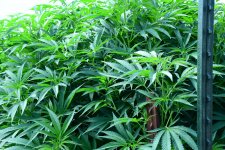
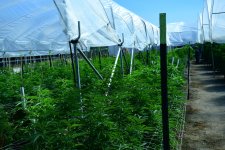

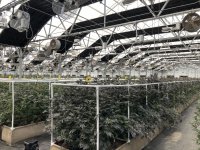
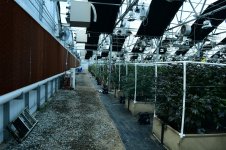
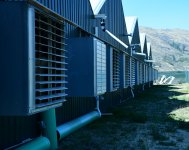
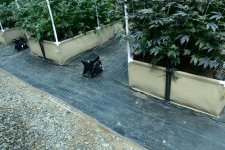

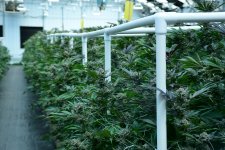
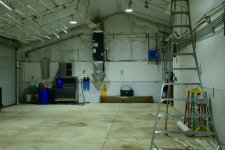
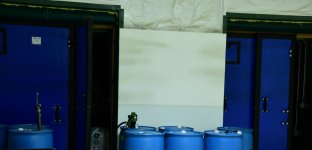
Nothing like Bud Porn to start the day
I like it @Mr. BrownLooks like heaven on earth
We have to talk about internships at the Mr. Nice farm
Maybe as a prize for the Circle of Excellence winners
Keep it growing
MB
Yo why no MNS gear!?cont-
The property is on 7 acres, I believe the greenhouse to be 26,000 sq.ft. The numbers came at me hard and fast so here goes- wired for 15,000 amps, there are 500 x 1000w HID, 250 reg. and 350 Schaefer oscillating fans. 2 million BTU of heat and 14 huge dehumifiers. One side of the greenhouse has a wetwall, an evaporative cooler that is 200’ long, 5’ high and 1’ deep. Huge exhaust fans on the opposite side of the GH draw this moisture across the area. Everything, including the shades are computer controlled.
View attachment 75487
View attachment 75490
View attachment 75484
To prepare the greenhouse, 20- 4’x105’ rows were dug 2’ deep. The churned soil was amended. On top was placed 4’ x 106’ x 18” fabric beds pcv’d in 4’x4’ sections for strength. Mr. Nice’s custom soil was added along with plant and bug beneficials. BTW, it took 394- 3-yard loads of this custom soil to fill the beds.
View attachment 75489View attachment 75485View attachment 75486
Besides the greenhouse, there is a large building for drying, including freezer space for storage, a resin making room, a lab for testing and the usual assortment of power and water treatment buildings too. Construction for 3 more buildings are in the works. These will house vegging plants, clones and moms.
View attachment 75483View attachment 75482
Overall, I was very impressed with the facility. The thought of running a greenhouse that big with all the necessary inputs and components required had me realizing what an incredibly huge responsibilty that is. We have Justin, who runs the farm operation to thank for that. As I mentioned, we are currently growing for the US market. I am not sure in what form they will arrive to this market whether flower or rosin but here is a list of what I saw growing and it was impressive.
Jealousy
Golden Pineapple
SmoreZ
Katsu Bubba
Soft Serve
Red Wedding
Scooby Snacks
Owen Wilson
Peanut Butter Breath
Pointbreak
Cherry Gelato
Wedding Crasher
Apple Fritter
Again a big bud thank you to Justin and crew for making it happen and taking the time to show me around.
mu
I have the same question too, why no MNS strains ?Yo why no MNS gear!?
This is what I also thought the upfront investment but in one year of use you will double pay the costs. After 2 to 3 grows you need to change all the lamps and is a huge cost plus the electricity bills, also the performance of Led lights in my knowledge is superior.Looks like a light dep kinda setup and its probbly because the LEDs would be a high upfront investement and maybe also preference by style.
I have the same question too, why no MNS strains ?
I also wonder about the lights why they dont use Leds?
ExactlyBut you know depending the climate (maybe colder when semi outdoor) the NDL/MH can add heat and benefit so you save on another end.
And then there are always states or cities where electricity may be cheaper for businesses to attract tax paying industry to settle there.
For spectrum, lifetime and overall quality i agree. LED kills.But still CMH are also fire from what i saw and also pack a good PAR spectrum.
Buying 350 bulbs vs 350 LED fixtures is a huge price difference...
Thank you to everyoneLooks like a huge and very technical setup that I dont quite understand. Looks like a hybrid greenhouse/lighted grow. Why? Wouldn’t the greenhouse provide enough sunlight or are the lights supplementAl due to the photo period there? Also, I’ve been reading different opinions on the LEDs and CMH throughout the different forums here and i would like to learn more or maybe just pluses and minuses of each. I’m sure whatever they are doing is the best just like every thing else but I just don’t get it by looking at the pictures. Maybe it’s these new heard meds which have me dumbed out…
That makes sense. Thanks for the answer. Your work look impressive!!!!Hello all. Hope all is well around the world !
I can go ahead and clear some of the questions posed here.
In regards to the LED lighting , the green house was constructed more than 6 years ago. At that time led lighting wasn’t the best choice . It has not been retrofitted with updated equipment for a few reasons .
Exactly
First is cost, of course it’s a large investment with returns in savings on electricity. (Which I will elaborate on ) .
Second is winter, bieng that the GH is located at high latitude during winter /fall/early spring intense light is needed to supplement the snow and cloud covered sky and the short days . As well the added heat is appreciated from said lighting.
As for power costs we are on hydro electric power. We have the cheapest power per Kw/hr in the country making the led payback quite a bit longer. Versus a grower in say California who will pay much more for power .
As for the fact we don’t have MNS gear running . It will happen we had to start somewhere I have been on site for six months in total and done a ton . We will get to fun projects eventually. Have to make sure we cross all the T’s and dot all the i’s first .
Thank you to everyone
DL
no agree with you in the industry they all use classic bulb led is more for personal grow is not powerfull enoughtHello all. Hope all is well around the world !
I can go ahead and clear some of the questions posed here.
In regards to the LED lighting , the green house was constructed more than 6 years ago. At that time led lighting wasn’t the best choice . It has not been retrofitted with updated equipment for a few reasons .
Exactly
First is cost, of course it’s a large investment with returns in savings on electricity. (Which I will elaborate on ) .
Second is winter, bieng that the GH is located at high latitude during winter /fall/early spring intense light is needed to supplement the snow and cloud covered sky and the short days . As well the added heat is appreciated from said lighting.
As for power costs we are on hydro electric power. We have the cheapest power per Kw/hr in the country making the led payback quite a bit longer. Versus a grower in say California who will pay much more for power .
As for the fact we don’t have MNS gear running . It will happen we had to start somewhere I have been on site for six months in total and done a ton . We will get to fun projects eventually. Have to make sure we cross all the T’s and dot all the i’s first .
Thank you to everyone
DL
In the industry they all started using led lights few years ago.no agree with you in the industry they all use classic bulb led is more for personal grow is not powerfull enought
and the cost is too more expensive
